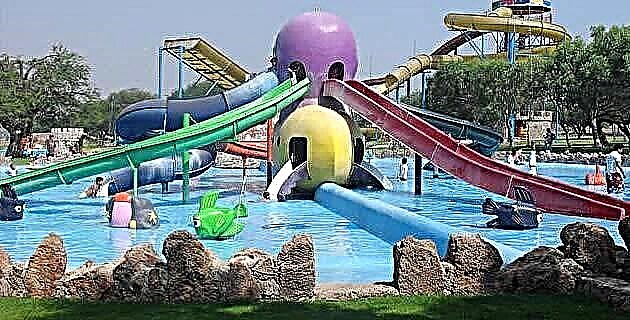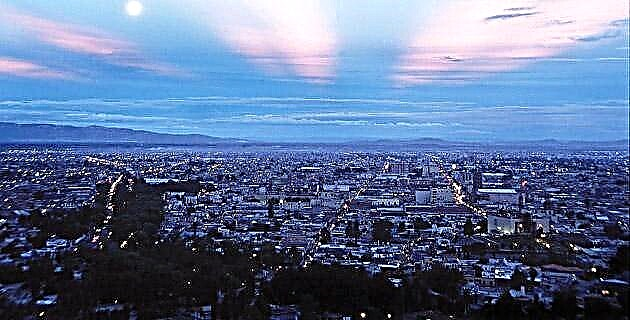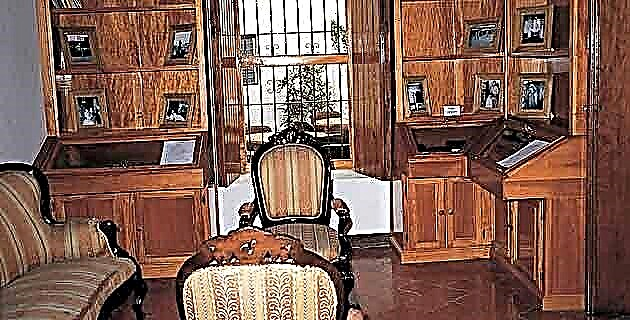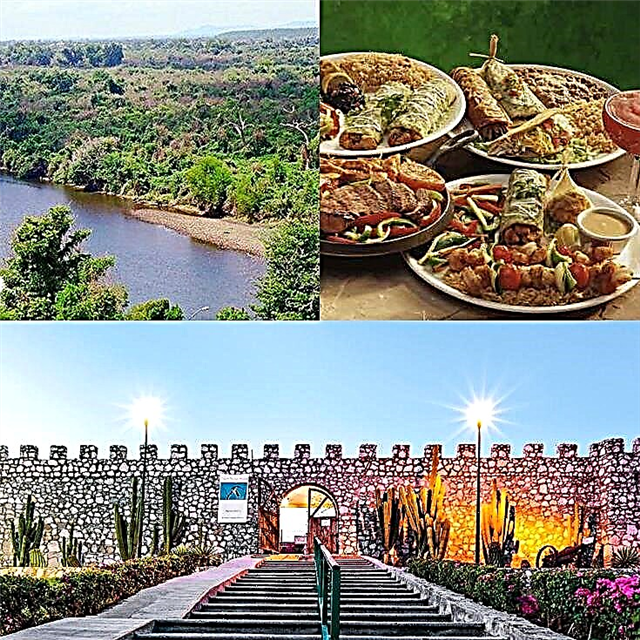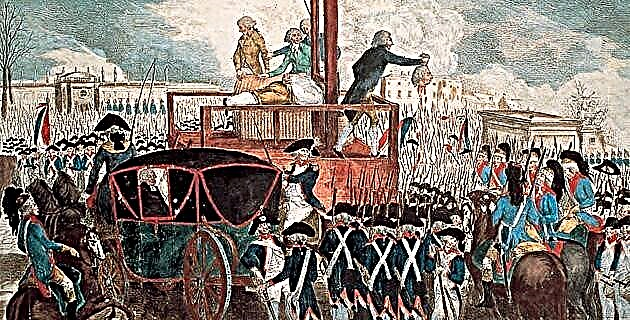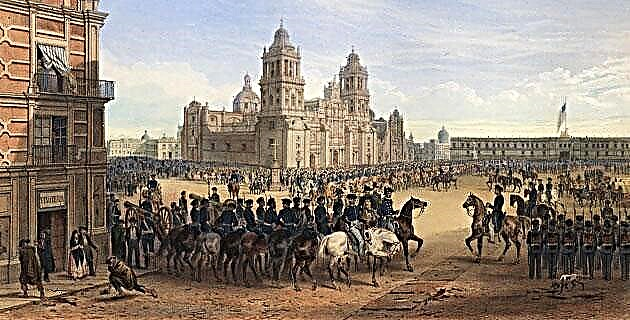
During the aftermath of the colonial period in Mexico, many travelers from the old continent came to our country in order to study the flora, fauna, urban landscape, as well as the types and customs of the Mexican population.
It is in this period, when Baron Alejandro de Humboldt made a trip, from 1799 to 1804, through various American countries, among others Mexico, which aimed to carry out scientific studies dedicated to observing, both natural resources, geography, as well as the main urban centers. Humboldt places special emphasis on the study of archaeological monuments and the different characteristic landscapes of the places visited, and on his return to Europe, his results make up the work entitled "Journey to the equinoctial regions of the New Continent." On the other hand, two of his important books: "Political Essay on the Kingdom of New Spain" and "Views of the Cordilleras and Monuments of the indigenous peoples of America", aroused great curiosity among the European public. Thus, attracted by Humboldt's excellent stories, a significant number of artist-travelers began to arrive in our country, among which the young German Karl Nebel stands out.
Nebel's biographical data turn out to be very scarce, we only know that he was born on March 18, 1805, in the city of Altona, located west of Hamburg on the Elbe river. He died 50 years later in Paris, on June 14, 1855. He was an architect, designer and painter. He received an education according to his time, totally influenced by the neoclassical movement; His work belongs to the artistic trend known as Romanticism, a movement that was at its peak in 19th-century France and is widely reflected in all of Nebel's lithographs.
Karl Nebel's work entitled: “Picturesque and archaeological journey over the most important part of the Mexican Republic, in the years between 1829 and 1834”, is composed of 50 drawn lithographs, most in color and only a few in white and black .. These works were designed by Nebel himself, but they were carried out in two different Parisian workshops: Lithography Lemercier, Bernard and Company, located on Rue de Seine SG gg., and the second, Lithography by Federico Mialhe and brothers , 35 Saint Honoré Street. Certain plates were lithographed by Arnould and others by Emile Lasalle, who worked in Bernard and Frey's workshop, and in some, up to two lithographers intervened: Cuvillier, for Architecture and Lehnert, for figures.
The French edition of Nebel's work was published in 1836 and four years later, the Spanish edition appeared. In his texts, written with the purpose of explaining the detailed illustrations, made in a simple and accessible language, his knowledge of the books written by the first Spanish chroniclers of the 16th century such as Torquemada, among others, is observed, as well as texts closer to his time, like the texts of Alejandro de Humboldt and Antonio de León y Gama.
After having made a trip through the coastal regions, the northern part of the country, the Bajío, the cities of Mexico and Puebla, Nebel embarks back to Paris, there he meets with the Baron de Humboldt, to ask him to preface his book, which he accomplished with good fortune. In his text, the Baron highlights the great naturalistic sense, the aesthetic character and the great archaeological scientific interest of Nebel's work. He also praises the extreme dedication of the German explorer, which is reflected in the descriptions of the archaeological monuments. However, what most caught Humboldt's attention were the wonderful lithographs that make up the work.
For Nebel, the most important purpose of his work, addressed to a large population, was to make known to the European public different natural and artistic aspects of Mexico, which he calls the "American Attica." Thus, without the intention of instructing the reader, Nebel intended to recreate and amuse him.
There were three topics covered by this traveler in his precious lithographs: archeology, urbanism and Mexican customs. There are 20 plates that contain the archaeological theme, 20 were dedicated to cities, where the natural landscape is incorporated into the entire scene and the remaining 10 refer to costumes, types and customs.
In the lithographs referring to Mexican archeology, Nebel managed to recreate an ancient and majestic environment, where the exuberant vegetation frames the entire scene; This is the case of the image titled Monte Virgen, where Nebel shows us gigantic trees and plants that make it difficult for travelers to pass. In this series, he was the first to publicize the pyramid of the Niches of El Tajín, which he considers the last witness of an ancient civilization doomed to disappearance. He also shows us a general view of the Cholula pyramid, of which he tells us that it is the largest building of the ancient Anábuac, provides us with the measurements of its base and height, based on the texts written by Torquemada, Betancourt and Clavijero . At the end of the explanatory text of the image, it concludes that the pyramid was surely built as a burial place for kings and great lords.
Amazed by the sculptural art of the Mexica, and returning to Don Antonio de León y Gama, Nebel provides us with complete information on this trade, as well as an approximation on the plate of three important sculptures found a short time before (at the end of the 18th century, in 1790), the Tizoc stone, the Coatlicue (drawn with some inaccuracies) and the so-called Piedra del Sol. It also shows us some pre-Hispanic musical instruments, grouping whistles, flutes and teponaztlis.
From his tours of the interior of the country, Nebel visits, towards the north of Mexico, the state of Zacatecas illustrating in four plates the ruins of La Quemada; towards the south, in the state of Morelos, he made four lithographs of Xochicalco, in which he shows us the reconstruction, not entirely approximate, of the Pyramid of the Feathered Serpent and its main reliefs.
As for the second topic addressed by Nebel, he manages to merge the urban landscape with the natural one. The drawings show the main and most important characteristics of the cities visited by this artist, Puebla, San Luis Potosí and Zacatecas, among others.
Some of them were used as the background of the composition, whose main theme is extensive valleys. In the more detailed views, we see large and imposing squares with monuments and buildings of a religious nature. We also recognize the main maritime ports of the country: Veracruz, Tampico and Acapulco, which are shown to us in relation to their importance.
Nebel dedicates five plates to Mexico City, since it is the place that most attracts his attention, and he considers it the largest and most beautiful city in Spanish America, comparable to the main European cities. The most striking of this series of lithographs are: Mexico seen from the Archbishopric of Tacubaya, which together with Vista de los volcanes de México, form a perfect sequence that allows Nebel to cover the entire Valley of Mexico and highlight the grandiose and imposing character of this great metropolis.
As more detailed views, this traveler made two plates of the current capital's zócalo. The first of them is the one entitled Interior de México, in which a part of the Metropolitan Cathedral is shown on the left side, on the other side, the building that occupies the National Monte de Piedad and in the background we see the majestic well-known building such as El Parían, a place where all kinds of fine products from Asia were traded in the 19th century. The second lithograph bears the title of Plaza Mayor de México, in it we are located at the mouth of Plateros street which today is Madero Avenue and the main theme is made up of the imposing construction of the Cathedral and the Sagrario, in addition from the corner of the National Palace, formed by the current streets of Seminario and Moneda having as a background the dome of the church of Santa Teresa.
The last lithograph of the Mexico City series, Nebel called it Paseo de la Viga in Mexico, it is a traditional scene in which Nebel shows us different social groups, from the most humble to the most elegant who enjoy a break and the beautiful landscape around them. In this plate we move to the old connecting channel between the lakes of Texcoco and Chalco. At the ends of the composition, the artist represented the characteristic vegetation of the chinampas: the trees known as ahuejotes. In the background we appreciate La Garita, where people ready to start their walk gather, either on foot, on horseback, in elegant carriages or by canoe, and a colorful bridge stands out in the background.
From the provincial cities, Nebel left us a simple view of Puebla, with the Iztaccíhuatl and Popocatépetl volcanoes as a background, a general view of Guanajuato and another of its Plaza Mayor. From Zacatecas he shows us a panoramic view, the interior and the view of the Veta Grande mine and Aguascalientes, details of the city and the Plaza Mayor. There is also the Plaza Mayor of Guadalajara, a general view of Jalapa and another of San Luis Potosí.
The other subject for which Nebel leaned was the costumbrista, influenced mainly by the work of the Italian Claudio Linati, who was the introducer of lithography in Mexico. In these images, the traveler portrayed the inhabitants of the different social classes that were part of the nascent Republic dressed in their most characteristic outfits, which show the fashion of the time. This is especially remarkable. in the lithograph that shows a group of women wearing a mantilla and dressed in the Spanish style, or that other one where a rich landowner appears accompanied by his daughter, a servant and his butler, all of them elegantly dressed and riding horses. It is in these lithographs of themes of everyday life, where Nebel highlights his style influenced by Romanticism most, in which the physical types of the characters represented do not correspond to reality, but to the classical types of ancient European art. However, these images are very useful to understand and reconstruct various aspects of life in Mexico during the first decades of the 19th century. This constitutes the importance of this artist, in addition to the great quality of his works.

